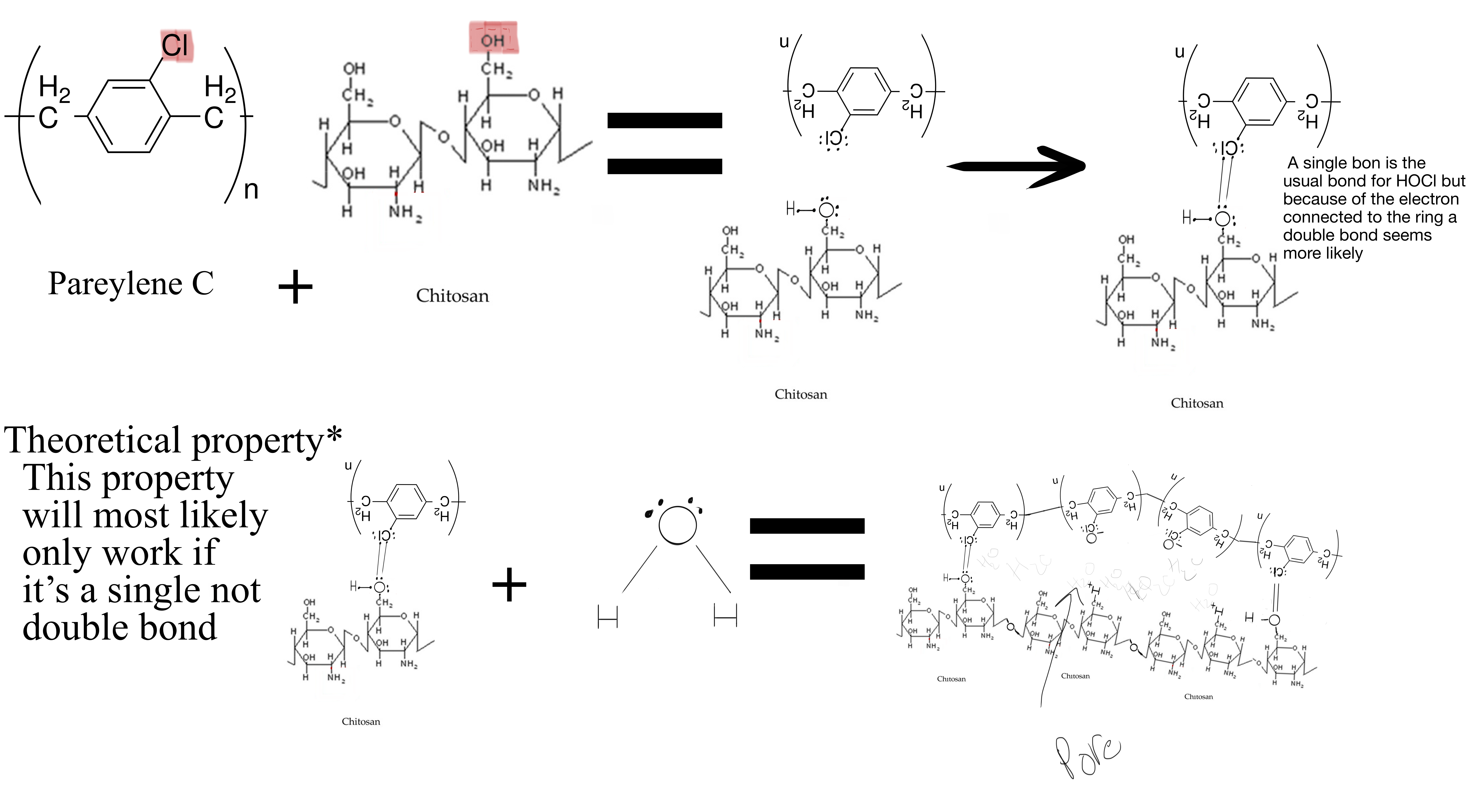The biohack.me forums were originally run on Vanilla and ran from January 2011 to July 2024. They are preserved here as a read-only archive. If you had an account on the forums and are in the archive and wish to have either your posts anonymized or removed entirely, email us and let us know.
While we are no longer running Vanilla, Patreon badges are still being awarded, and shoutout forum posts are being created, because this is done directly in the database via an automated task.
Chitosan and paralyene C
simple question haven't done any research yet on the topic but are chitosan and paralyene c cross-linkable ?
Comments
Displaying all 19 comments
-
Not really. Moreover, chitosan breaks down internally over time. Your coating would be porous.
-
To specify I am talking about to each other
-
For what type of application is this coating for? Osseoimplants?
-
AT the current moment I am just trying to see if it is possible

 at the current moment just looking at the two structures I am thinking about if connecting the Cl to the OH group would work... any other ideas?
at the current moment just looking at the two structures I am thinking about if connecting the Cl to the OH group would work... any other ideas? -
Smacking that cl to be friends with the amine is very unlikely. Removing the cl and attaching a functional group is possible tho. I'll look into it a bit more.
-
hypochlorous acid HOCl is a weak acid I was thinking that if we could get the CL to bond with the OH group at the top of chitosan we could also use the partial dissociating property of HOCl to ClO, and H to create a pore that could be filled with something
-
I haven't had organic chem yet, but what would keep the HOCl from trying to bond its chlorine with the OH group attached directly to the ring (Bottom left)? What do you mean by "create a pore"? I thought about it a bit more, and I think I see what you're trying to do. You want to remove the OH from the amine, so you've got a bonding site for another functional group/atom which might promote crosslinking. I think that Chitosan is cross-linkable. I'd have to go dig up the paper where a researcher talked about doing it though.What would the point of cross-linking it be, though?Could you diagram out what you're expecting to see?
-
I can't right now as I am in school but forget about the amines for a sec and look to the CH2 OH the oh group on that should have two lone pairs still available for bonding due to the C bonding to the O and the H bonding O both only using 1/2 a lone pair each oxygen has in total 3 lone pairs and right now only one is bonded which leave a few perfect sites for bonding the Cl can bond to the oxygen and then because of the polarity of HOCl in water some of the HOCl will separate into the ClO- ion and the H+ ion will separate and leave a pore, but doing it with the amine group also might work
-
My bad. I got the CH2 and amine group mixed up.
-
It's fine I'm out of school right now but at my grandma's as soon as I get home I'll draw up a proposed structure but the hard [art is going to be finding a catalyst to link the two together
-
Would it be possible to use tosyl chloride or a mesylate to convert the OH on chitosan to a decent leaving group then attack it with the Cl from parylene?
-
 image
image -
So, why crosslink them at all?
-
The fact that HOCl is a weak acid means that most of it will stay together chitosan and paraylene c are bio-safe and paraylene c already partially bonds to skin so if you fill the pores with say HA(hydroxyapatite), or who knows ECM(extracellular matrix), or maybe just seed it with dead cells It could be an amazing coating. Plus crosslinking the plastics will make them stronger and I just want to know how the body will react to the new polymer
-
I mean, I'm assuming you mean to do the parylene on the underside on a flat layers and the chitosan ontop? In that case you have a lot of interesting options if you can crosslink chitosan to it. You may want to use a silane layer between parylene and chitosan though. Would make this way easier and would still be biosafe. Then you could have whatever functional group on the end that you want and thereform could attach chitosan super easily. If you using something like aminopropyl trimethoxy silane or one of the other aminopropyl silanes, it'd make life super easy. Would coat the surface in a single atom thick of silica which could actually go toward holding the parylene together longer and the amines make attaching stuff easy. You could literally just coat it in chitosan at that point, dip it in a low concentration of formaldehyde and have a permanent coating
-
@Zwytechhacker: I don't really understand the chemistry here yet (still trying to pick up the basics atm) but I just wanted to point out in case it is helpful that on some browsers at least (in my case, firefox on ubuntu) the images you're posting appear to be freakin' enormous to the point of hard-to-read :/
-
@katngreen usually the site resizes it if not just try reloading it
-
@katngreen this usually only happens if you have js deactivated. With js on, it should properly resize and fit.
-
Thanks! It looks a lot better now :)
Displaying all 19 comments
